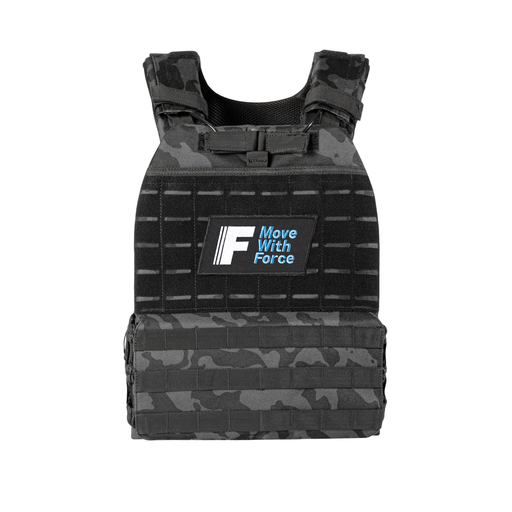
Can Rucking help you get in shape?
Rucking is a great way to combine exercise and the great outdoors, but how effective is it at getting you in shape?
Is rucking a good workout?
Rucking combines the cardio of a good hike with resistance training, because the rules are you wear a weighted vest (or a pack with added weights). It’s a great workout with tons of benefits for your cardiovascular health, muscular endurance, and bone density.
As it’s an outdoor activity, there are plenty of variables which will affect how good of a workout you get. How long will you walk for? What distance will you cover? How fast will you go? What kind of terrain are you on, is it hilly or flat? And how much extra weight are you carrying?
Can rucking help you lose weight?
There are loads of good reasons to take up rucking, and we know that not everyone wants to lose weight. But the fact is, plenty of people exercise to burn calories and lose a few lbs. So you might be wondering if rucking is a good workout for weight loss. To lose weight, you need to create a calorie deficit by either burning more calories than you consume, or eating fewer calories than you burn. Rucking is a great way to burn more calories and enjoy some time in nature.
Does rucking burn calories?
Rucking can burn lots of calories, and because it’s a low-impact exercise you can do it for a long time without stopping. Rucking will burn more calories than just going for a walk, because you will be hiking over off-road terrain and you’ll have the extra load from your weighted vest. The fancy name for this is “metabolic cost”.
Experienced ruckers say that rucking can burn 2-3 x the calories of an equivalent walk. Maximise your calorie burn by walking faster, including uphill stretches, and adding a bit more weight to your ruck pack or weighted vest!
Can rucking build muscle?
It might surprise you to know that rucking absolutely can build muscle. Whilst walking itself is a cardio activity, the added weight that you carry during rucking turns it into a resistance training workout. Throw in some hills, inclines, and obstacles like stiles and fences and you have a pretty decent muscle building activity.
Rucking will build the most muscle in your lower body (quads, hamstrings, glutes and calves) but you can also expect to see muscle gains in your back, core, and shoulders because of carrying a weighted vest or ruck pack across your torso.
Rucking will build athletic, functional muscle rather than big bodybuilder-style mass, so if your goal is to add significant muscle mass, you’ll need to combine rucking with dedicated strength training or weight lifting workouts
Is rucking better than cardio?
Are you considering swapping your traditional cardio workouts for rucking? It could be the best thing you ever did for your fitness. Rucking is a fantastic cardio activity, getting your heart rate up and letting you push harder when you want more.
Unlike HIIT style cardio, rucking is sustainable for hours (if you want to do it for that long!) but unlike gym cardio machines it’s constantly varied thanks to the natural terrain. And you’ll get the extra feel-good factor from being outside in the fresh air.
How to build ruck fitness
What’s the best way to use rucking as part of your fitness routine? The basic rules of rucking are simple – just put on your weighted vest (or add ruck weights to your pack) and start marching! Over time, you should aim to increase one more of the three core rucking criteria: pace, distance, and weight carried.
If you’re not already walking or hiking really, spend 2-3 weeks building up your walking endurance before you start rucking. This advice applies even if you already bike, swim, or do lots of weights. Rucking uses different muscles, and the only way to prep for it to be a decent walker.
Make sure you’ve got a durable, quality weighted vest so you can add your rucking weight and stay comfy. Check out our full range of comfortable weighted vests for rucking. Start at 10%-20% of your bodyweight.
To build ruck fitness, aim for 2-3 30-minute rucks per week. Choose varied terrain and try to add some inclines and hills. Over time, you can build distance and pace. Experienced ruckers think nothing of ticking off 20 miles – but there’s no rush to get to that level. Remember, the main aim is to develop a form of outdoor activity that you can fall in love with!
The one rule of rucking is that you must be wearing a pack or weighted vest. Check out our quality weighted vests with built-in weights that sit comfortably on your body – perfect for rucking. Find your weighted vest here and start rucking.

















